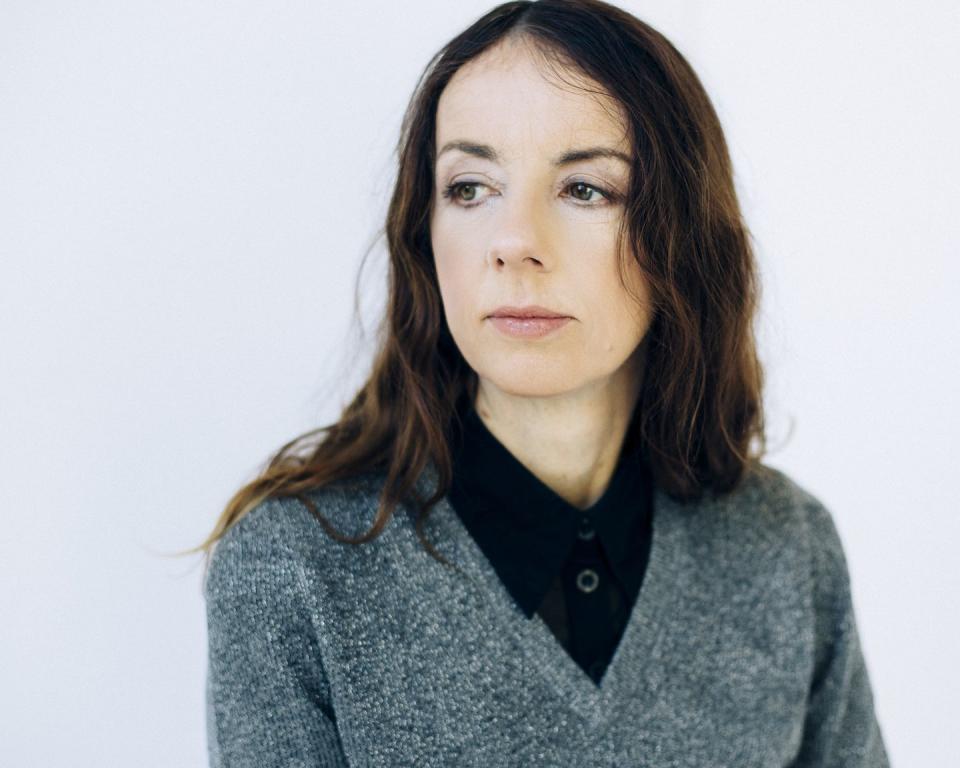Maxine Doyle: “The best thing about my job is being inspired on a daily basis”

“We’re human… We crave interaction, flesh and blood, touch and heartbeats,” says the director and choreographer Maxine Doyle, reflecting on Punchdrunk’s triumphant re-emergence in the wake of the pandemic. The immersive-theatre company, whose model relies on bringing people together in person, often in small spaces and close proximity, was inevitably hard-hit by the series of lockdowns – and, Doyle admits, “we wondered whether people would be too scared to return” – but its latest production, The Burnt City, has seen audiences come in droves to the company’s new permanent home in Woolwich’s One Cartridge Place.

Doyle, who has a degree in English and dance from the University of Roehampton and a masters in choreography, says that she fell in love with dance at an early age. “But I always knew I wanted to create performances rather than star in them,” she adds. For about seven years, she had her own small-scale touring company, but became dissatisfied by the failure of the venues to do justice to the ambition of the productions. “So I started renting bar spaces to perform in instead, and having a DJ play at the beginning to create more of an event,” she explains. It was around that time, in 2002, that she met Felix Barrett, who had founded Punchdrunk two years previously while studying at the University of Exeter and was a pioneer of ‘site-sympathetic’ performances – the concept we now know as immersive theatre. The pair’s vision aligned and Doyle came on board to help launch an early version of the much-lauded production Sleep No More, a darkly cinematic retelling of Shakespeare’s Macbeth that was subsequently taken to both New York and Shanghai.
Doyle has seen the organisation expand from a scrappy start-up into an international success story. “I remember writing the very first application for an Arts Council grant,” she says. “Since then, our ambition has grown along with the scale of the buildings, the size of the cast and the quality of the performances. The biggest change in the past couple of years is that we’re now a commercial company rather than charity, so that means we’ve had to build partnerships and find investors to help us continue to grow.”
Here, Doyle shares advice on what female leaders in any sector can learn from her experience of directing a company of performers…
1/ Recruiting the right people is the most important task facing any leader
“We might have 1,000 applications for a single role, which we’ll get down to about 30 candidates. Then we’ll spend three days in a dance studio watching them move, before bringing them into the building to see how they respond to the environment. We’re always looking for people who have something about them that’s magical, mysterious, beautiful or strange, who are charismatic enough to make the audience want to follow them.”
2/ Working as a team gets the best performances out of everyone
“We spend a lot of time at the beginning of the process working as an ensemble. Dance, by its nature, necessitates generosity and trust, so we’ll practise listening to each other in a very instinctive way. A big feature of Punchdrunk’s work is that it’s really collaborative, so we work together in the studio as much as possible, storyboarding and creating choreography together.”
3/ Good ideas can come from anywhere
“I’m always interested in hearing the best ideas in the room, and those don’t necessarily come from the artistic director or me. Part of my role is about ensuring that we listen to everyone’s suggestions, but also understanding when is the time to be able to close conversations down – in a nurturing, supportive way – and make clear decisions about the direction the work should go.”
4/ Everyone has a part to play
“I always tell the dancers to think about their character as the lead part in their own particular film. I want every single cast member to take ownership over the role that they create.”
5/ Planning is everything – but leave some space for creativity too
“Before we begin rehearsals, we’ll have mapped out an incredibly complex set of stories, so there will already be around 130 scenes to work on – but they’re not fully fleshed-out, they’re designed as a starting-point that the performers can use to continue the creation process collaboratively.”
6/ Be prepared to do anything and everything
“When we started out, we all did multiple roles – I even remember walking through the streets with an A to Z looking for buildings to perform in, and then ringing management boards and local councils to find out what spaces were available to us. It was only later that we became well-enough known to attract investment.”
7/ Look for like-minded partners
“Identifying new collaborators in a relatively short space of time is often a challenge. We need producing partners who understand our vision and the huge mountain that needs to be climbed to realise work of this scale. As a leader, my job is to communicate our values and ideas to everyone we work with.”
8/ Stay positive.
“When we had to pull the shutters down during the pandemic, we were so worried that consumer appetite would be too injured to recover. I can’t quite believe we managed to keep the organisation going during that time, and that we’re all still working today. That’s a gift I don’t take lightly.”
You Might Also Like

 Yahoo Finance
Yahoo Finance 